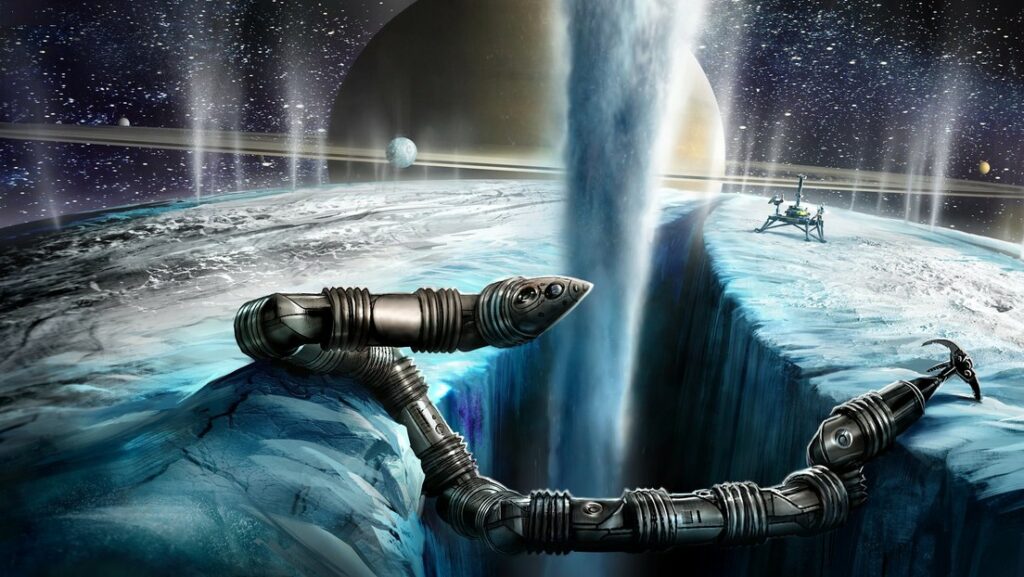Inspenet, May 13, 2023
The National Aeronautics and Space Administration (NASA) is developing a snake robot that can adapt to different ground conditions and explore celestial bodies.
The robot known as the ‘Exobiology Extant Life Surveyor’ or ‘Exobiology Extant Life Surveyor’ (EELS) is about 4 meters long, weighs about 100 kg and is able to glide over difficult terrain using rotating segments. .
Because of the time it takes for communication signals to travel the distances between Earth and deep space, the EELS is designed to autonomously study its environment, calculate risk, travel, and collect data with as-yet-undetermined scientific instruments. The objective is that, in case of failures, the robot recovers itself, without human help.

NASA’s snake robot aims to explore Enceladus, one of Saturn’s moons
The device was developed by NASA’s Jet Propulsion Laboratory to be sent to Enceladus, one of Saturn’s 83 moons , in search of water, an environment capable of supporting life.
Video posted on May 9 shows the robot moving on various surfaces, including an ice rink, a snow-covered mountainside, and a beach. Engineers also tested the robot on a Mars-like piece of land called the Mars Yard, created at a ski resort in the snowy mountains of southern California.
Images obtained in the 1980s by the Voyager space probe showed that Enceladus has a bright white surface, making it the most reflective celestial body in the solar system. According to NASA, because this small natural satellite reflects a lot of sunlight, its surface temperature is extremely cold, reaching -201 °C.
In 2005, the Cassini orbiter identified particles of water ice and gas bursting from the moon’s surface at a speed of 400 meters per second.
Source : https://actualidad.rt.com/actualidad/466567-video-nasa-muestra-pruebas-robot-saturno
Photos : NASA Jet Propulsion Laboratory
Don’t miss the Inspenet News at: https://inspenet.com/inspenet-tv/

